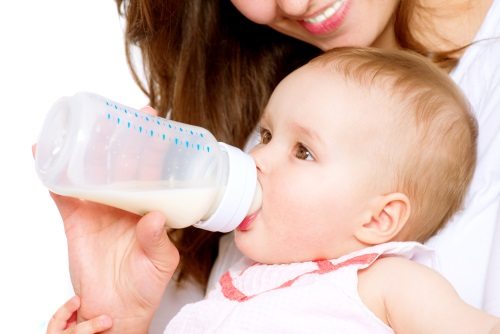The U.S. Food and Drug Administration (US FDA) has released a new action plan, Closer to Zero, that is aimed at reducing exposure to toxic elements in foods commonly eaten by babies and young children to the lowest possible levels.
Although the FDA’s testing shows that children are not at an immediate health risk from exposure to toxic elements at the levels found in foods, the authority has set short- and long-term goals for achieving continued improvements in reducing levels of toxic elements in these foods over time.
While the US residents want zero toxic elements in the foods eaten by their babies and young children, in reality, because these elements occur in our air, water and soil, there are limits to how low these levels can be.
The FDA’s goal, therefore, is to reduce the levels of arsenic, lead, cadmium and mercury in these foods to the greatest extent possible.
Closer to Zero includes research and evaluation of changes in dietary exposures to toxic elements, setting action levels (recommended limits of toxic elements in foods that can be achieved by industry and progressively lowered as appropriate), encouraging adoption of best practices by industry, and monitoring progress.
The action plan will occur in three phases with the first consisting of the following:
– Evaluate the scientific basis for action levels.
The cycle of continual improvement starts with the FDA evaluating existing data from routine testing of the food supply, research and data on chemical analytical methods, toxicological assays, exposure and risk assessments, and other relevant scientific information.
Through a process that may include advisory committees, public workshops, and consultation with scientific experts, federal agency partners, and other stakeholders, the agency will establish interim reference levels (IRLs) for certain toxic elements as appropriate.
An IRL is a measure of exposure from food that the FDA may use to determine if the amount of exposure to an individual element across foods could result in a specific health impact.
– Propose action levels.
The IRLs may be among the key factors that inform the development of the FDA’s proposed action levels for certain toxic elements in categories of baby foods (e.g., cereals, infant formula, pureed fruits and vegetables, etc.) and other foods commonly eaten by babies and young children.
Consult with stakeholders on proposed action levels, including the achievability and feasibility of action levels.
For each toxic element—for every identified category of food—the FDA will gather data and other information through a process of consultation that could include workshops, scientific meetings, and collaboration with federal partners to assess, among other things, the achievability and feasibility of the proposed action levels and the timeframes for reaching them.
– Finalize action levels.
The FDA will use the information gathered from stakeholders, updated scientific research, and routine monitoring data to make any needed adjustments and finalize action levels.
Once the FDA has published final action levels, the agency will establish a timeframe for assessing industry’s progress toward meeting the action levels and recommence the cycle to determine if the scientific data support efforts to further adjust the action levels downward.
FDA’s action plan will start with prioritizing work on those elements for which we have the most data and information – arsenic and lead – while research continues on other elements, progressing through each element over time across various categories of foods consumed by babies and young children.
During the plan’s first year (phase one), we will be proposing action levels for lead in categories of foods consumed by babies and young children, consulting with and gathering data from stakeholders and federal partners on issues such as the feasibility of meeting action levels for lead, and sharing resources with industry on best practices for reducing or preventing lead contamination.
The authority will also complete updated sampling assignments testing toxic element levels in baby foods and evaluate the science related to arsenic exposure from foods beyond infant rice cereal.
Phases two, three and beyond are outlined in its plan.
Through this plan, the FDA will also take measures to ensure that limiting exposure to toxic elements in foods does not have unintended consequences — like limiting access to foods that have significant nutritional benefits by making them unavailable or unaffordable for many families, or unintentionally increasing the presence of one toxic element when foods are reformulated to reduce the presence of another.
In addition, its goal of moving closer to zero reflects the reality that fruits, vegetables, and grains do take up toxic elements in the environment as they grow.
With a cycle of continual improvement and collaboration, the FDA will aim to push the levels of toxic elements in these foods closer and closer to zero over time.










